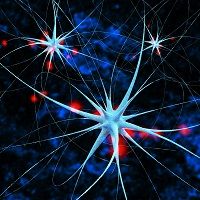Article
Central Nervous System Important for Diabetic Peripheral Neuropathy
Author(s):
The central nervous system plays a role in painful diabetic peripheral nerve disease, according to findings presented in the journal Pain.

The central nervous system plays a role in painful diabetic peripheral nerve disease, according to findings presented in the journal Pain.
Researchers from the Sheffield Teaching Hospitals NHS Foundation Trust in the United Kingdom reviewed evidence for causes of painful diabetic peripheral neuropathy to determine its pathogenesis. Many of the studies they looked at utilized MRIs and magnetic resonance spectroscopy techniques.
Diabetic peripheral neuropathy affects up to half of patients with diabetics, the study authors added, and is a major factor in morbidity and increased mortality.
The investigators noted that recent studies indicated a variety of factors could cause diabetes or elevate onset risks, such as poor glycemic control, duration of diabetes, hyperlipidemia and hypertriglyceridemia, elevated albumin excretion rates, and obesity.
However, there have not been sufficient studies to determine causes and risks for diabetic peripheral neuropathy. Even with the evidence surrounding the pathogenesis of diabetic peripheral neuropathy, the researchers believed the biomarkers were unidentified.
Throughout their investigation, the authors learned that the central nervous system plays a large part in diabetic peripheral neuropathy. The researchers uncovered the loss of volume (known as atrophy) in the primary sensory cortex, the part of the brain responsible for the sense of touch.
The researchers reported that differences in blood supply to the thalamus could contribute to either painful or painless forms of diabetic peripheral neuropathy. The oversupply (hyperperfusion) led to the painful version, while an undersupply (hypoperfusion) can lead to painless diabetic peripheral neuropathy.
Changes in the brain area known as the brain-processing matrix were thought to be connected to detecting the location and intensity of pain in addition to the emotional/ affective responses.
The researchers also learned that reductions in the brain’s gray matter, where the somatosensory perceptions are processed, contributed to diabetic peripheral neuropathy.
“Although DPN has been considered a disease of the peripheral nerve, from numerous studies it is becoming apparent that there are indeed changes within the CNS that…appear to be concomitant with the evolution of painful and painless DPN,” the researchers concluded. They believe their findings “may lead to development of more rational therapies to help reduce the burden of diabetic peripheral neuropathy.”


